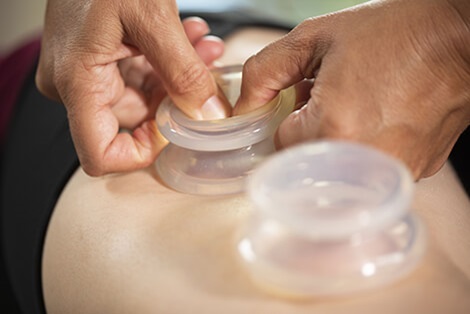Cupping
Pain relief for muscles and soft tissue

Treat your muscle and soft tissue problems with cupping therapy at Dignity Health Physical Therapy. Our therapists provide a manual therapy technique called cupping used — along with other therapies — to treat muscle and soft tissue dysfunction.
Available for appropriate patients, from pre-teens through adults, cupping can benefit your affected areas by:
- Decreasing inflammation
- Decreasing muscle spasms
- Decreasing pain
- Improving blood and oxygen circulation
- Improving range of motion
Cupping treatments
Dignity Health Physical Therapy offers two types of cupping therapy: dynamic and static techniques. You and your therapist will select the right technique for you based on the location of your affected muscles and comfort level.
- Dynamic cupping is our most commonly used treatment. During treatment, your therapist will gently apply silicone cups to the affected area. The soft tissue will begin to rise within the cup and develop into a reddish pink color. The therapist glides the cups along your skin using light, medium or strong pressure – based on your personal preference and comfort level. Your therapist will adjust the amount of pressure as therapy progresses.
- Static cupping is typically used to target deeper muscles in the back. Your therapist will place silicone cups on the affected areas and leave them in one place for 2-10 minutes.
Your therapist may recommend you receive cupping therapy once or twice a week, along with other therapies based on your diagnosis, overall goals and the individualized treatment plan created.
What to expect after cupping
Many patients feel the benefits of cupping in as little as one treatment session. As with all therapies, there is a small risk of minor side effects from cupping therapy. These side effects can include:
- Bruising, this is most common with static cupping and most bruises disappear within 10 days
- Mild soreness in the areas where cupping is used
- Minimal pain
Communicate with your therapist about any concerns you may have regarding pain or discomfort after therapy. Your therapist can adjust the amount of pressure in future treatments to reduce side effects.